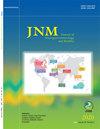阿片类药物引起的便秘:诊断和治疗中的新旧观念。
IF 3.3
3区 医学
Q2 CLINICAL NEUROLOGY
引用次数: 0
摘要
近年来,由于慢性疼痛相关疾病的发病率不断上升,阿片类镇痛药的日常使用量大幅增加。阿片类药物引起的便秘(OIC)是阿片类镇痛药最常见的副作用之一,这种副作用未得到充分认识和治疗。OIC 会造成心理困扰、降低工作效率并增加使用医疗设施的机会,从而大大降低生活质量。OIC 带来的经济和社会负担促使人们为日常临床实践制定了精确的策略。其关键在于通过摄入充足的水分和纤维素来预防便秘,避免久坐,以及及早识别和治疗可能导致便秘恶化的辅助因素。推荐的一线疗法包括渗透性(最好是聚乙二醇)和刺激性泻药。对一线治疗无效的患者应使用外周作用的μ-阿片受体拮抗剂,如甲基纳曲酮、纳洛酮醇或纳尔代丁。肠功能指数是评估 OIC 严重程度和监测反应的主要工具。本文讨论了有关 OIC 的病理生理学、临床评估和管理的最新文献,并为其评估和治疗提供了实用的方法。本文章由计算机程序翻译,如有差异,请以英文原文为准。
Opioid-induced Constipation: Old and New Concepts in Diagnosis and Treatment.
Daily use of opioid analgesics has significantly increased in recent years due to an increasing prevalence of conditions associated with chronic pain. Opioid-induced constipation (OIC) is one of the most common, under-recognized, and under-treated side effects of opioid analgesics. OIC significantly reduces the quality of life by causing psychological distress, lowering work productivity, and increasing access to healthcare facilities. The economic and social burden of OIC led to the development of precise strategies for daily clinical practice. Key aspects are the prevention of constipation through adequate water intake and fiber support, avoidance of sedentariness, and early recognition and treatment of cofactors that could worsen constipation. Recommended first-line therapy includes osmotic (preferably polyethylene glycol) and stimulant laxatives. Peripherally acting μ-opioid receptor antagonists, such as methylnaltrexone, naloxegol, or naldemedine, should be used in patients that have not responded to the first-line treatments. The bowel functional index is the main tool for assessing the severity of OIC and for monitoring the response. The paper discusses the recent literature on the pathophysiology, clinical evaluation, and management of OIC and provides a pragmatic approach for its assessment and treatment.
求助全文
通过发布文献求助,成功后即可免费获取论文全文。
去求助
来源期刊

Journal of Neurogastroenterology and Motility
GASTROENTEROLOGY & HEPATOLOGY-CLINICAL NEUROLOGY
CiteScore
6.30
自引率
8.80%
发文量
96
期刊介绍:
Journal of Neurogastroenterology and Motility (J Neurogastroenterol Motil) is a joint official journal of the Korean Society of Neurogastroenterology and Motility, the Thai Neurogastroenterology and Motility Society, the Japanese Society of Neurogastroenterology and Motility, the Indian Motility and Functional Disease Association, the Chinese Society of Gastrointestinal Motility, the South East Asia Gastro-Neuro Motility Association, the Taiwan Neurogastroenterology and Motility Society and the Asian Neurogastroenterology and Motility Association, launched in January 2010 after the title change from the Korean Journal of Neurogastroenterology and Motility, published from 1994 to 2009.
 求助内容:
求助内容: 应助结果提醒方式:
应助结果提醒方式:


